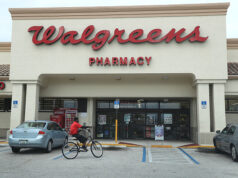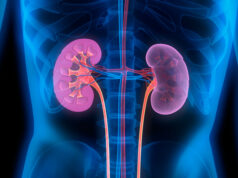French drugmaker Genfit may give its drug for nonalcoholic steatohepatitis a price tag as low as half that of the price some are forecasting for a drug that will likely be the first-ever NASH drug to hit the market later this year.
In an interview at the BIO CEO conference in New York Monday, Genfit CEO Pascal Prigent said that the Lille, France-based company was planning to price its lead product candidate, elafibranor, with patient access in mind, should it win Food and Drug Administration approval for NASH. NASH is a disease that causes inflammation and damage to the liver due to the buildup of fat and is the most severe form of nonalcoholic fatty liver disease (NAFLD), whose incidence is growing rapidly, particularly with the rise of obesity and Type 2 diabetes.
“One thing we hear from patients is that there’s no such thing as a ‘pure’ NASH patient – they may be overweight, have diabetes or cholesterol issues and be on multiple medications,” Prigent said. “We believe in this context that it’s important to price for access.”
Elafibranor is currently in Phase III development, and Genfit plans to release data in the first quarter of this year, with an FDA filing in the fourth quarter if the data are positive. That would place the drug in second place for regulatory approval after New York-based Intercept Pharmaceuticals’ obeticholic acid, which the FDA is expected to decide whether or not to approve this summer, following a scheduled April 22 advisory committee meeting.
In a note to investors in December, Cowen analyst Ritu Baral wrote that while Intercept’s executives had not yet provided specific guidance on pricing for obeticholic acid, Cowen had forecast that it would likely be in the range of $15,000-$20,000 per year, based on its clinical benefit.
Prigent said that as a ballpark estimate, elafibranor could carry a list price in the $10,000 per year range, which would be approximately in the price range of GLP1 agonist drugs used for Type 2 diabetes. The idea, he said, is that elafibranor would be targeting a relatively broad NASH population compared with obeticholic acid, and the company’s market research indicated that the lower price would lower the likelihood of payers putting up barriers to access, chief among them requiring patients to undergo liver biopsy. Such barriers to access like liver biopsy or prior authorization present a greater concern with NASH drugs than reimbursement, given that payers have already told the company they would reimburse drugs given that nothing currently has FDA approval, Prigent said.
Another consideration with respect to pricing, he said, is that patients taking drugs for NASH are also likely taking medications for other metabolic disorders, such as diabetes, obesity and high cholesterol, meaning that price would lower the burden on them.
Although there would be two NASH drugs on the market, with elafibranor possibly entering around June of next year, Prigent said it and obeticholic acid would likely be complementary rather than competitive. That’s because despite both drugs being developed for NASH, they are targeting different endpoints in the disease. Obeticholic acid is being developed for improvement in fibrosis of the liver, while elafibranor is being developed for resolution of NASH. As such, Prigent said, combination of the two drugs could be possible.
Photo: Alaric DeArment, MedCity News







